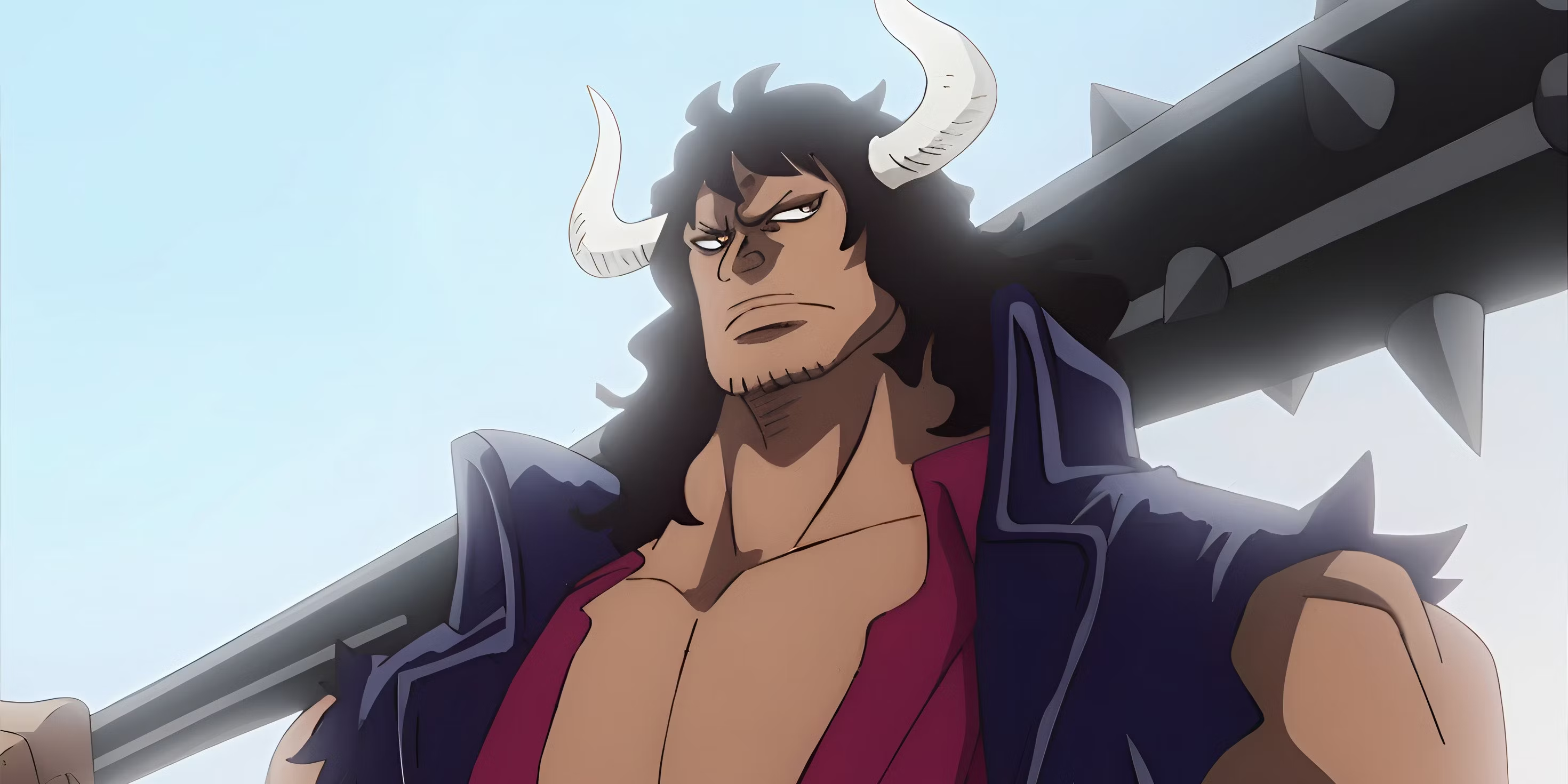
Key Takeaways
- Kaido’s Hassaikai, despite being ungraded, showcases deadly techniques inspired by Buddhism.
- The Eight Precepts Kaido distorts through his combat styles reflect his indulgence and chaos.
- The Hassaikai symbolizes Kaido’s rejection of discipline, highlighting strength without moral grounding.
One Piece is a series known for its rich lore, including an intricate system for grading weapons. This system ranks weapons into four tiers: Supreme Grade, Great Grade, Skillful Grade, and Grade, with the most powerful weapons often falling into one of these categories. Each grade reflects not only the weapon’s craftsmanship but also its historical significance and combat potential.
However, not every legendary weapon in One Piece has been formally ranked. Some, like Kaido’s Hassaikai, remain ungraded despite their immense power and iconic status. Despite its lack of official classification, Oda has stated that if Kaido were to leave the Hassaikai behind, it would surely become a “legend” in its own right. But what makes this massive, spiked kanabo so unique?
The Origins and Abilities of Kaido’s Hassaikai
Kaido’s infamous kanabo, the Hassaikai, has been his weapon of choice for most of his known pirate career. Whether he’s in human form or his towering Human-Beast form, Kaido uses this formidable iron club for the vast majority of his melee attacks. His raw strength, combined with his mastery of Supreme King Haki, allows him to channel incredible destructive force through the weapon. With a single swing, Kaido can send enemies flying over great distances, leaving them severely wounded—or outright unconscious.
Wielding the Hassaikai one-handed for speed and two-handed for maximum power, especially during his more powerful attacks, Kaido uses the weapon both offensively and defensively. It’s capable of deflecting even the most dangerous strikes. Despite the extensive use of the weapon, its origins remain shrouded in mystery. When Kaido first joined the Rocks Pirates as an apprentice over 40 years ago, he already carried the Hassaikai. Over the years, the weapon has seemingly evolved alongside him, becoming an extension of his overwhelming strength. By the time he fought Luffy in Wano, Kaido had mastered eight distinct techniques with the Hassaikai, each inspired by the Eight Precepts of Buddhism.
The Eight Techniques of Kaido’s Hassaikai
Though it lacks a formal ranking, the Hassaikai has demonstrated a range of deadly techniques that reflect Kaido’s brutal combat style. These techniques are not just about raw power—they carry a symbolic weight, each named after and inspired by elements of Buddhism. However, in Kaido’s hands, these spiritual principles are twisted into forces of chaos and destruction.
- Raimei Hakke (Thunderclap Eight Trigrams): Kaido’s signature move, a devastating horizontal swing often used at blinding speed. Imbued with Supreme King and Armament Haki, this attack knocked Luffy unconscious with a single blow.
- Horai Hakke (Roaring Thunder Eight Trigrams): A more powerful variation of Raimei Hakke, used in retaliation against Luffy’s Over Kong Gun.
- Daiitoku Raimei Hakke (Great Virtue Thunderclap Eight Trigrams): A follow-up to Raimei Hakke, which is combined with Kaido’s bulkier Human-Beast form, increasing the brutality of his strike. It was first used against Gear 5 Luffy.
- Hakai (Supremacy Sea):A collaborative attack with Big Mom, combining the powers of Hassaikai and Napoleon to create an immense energy wave capable of devastating entire landscapes.
- Kosanze Ragnaraku (Conquered Three Worlds, Attracting Hell): A thunderous overhead strike, spinning the Hassaikai above his head and crashing it down with enough power to smash opponents into the ground. This attack knocked Luffy unconscious the first time he used it.
- Kongo Kabura (Vajra Arrow): A long-range shock-wave attack. Kaido swings the Hassaikai forward with such force that it sends a projectile-like force toward enemies. This wave was enough to knock Yamato down in his Human-Beast form.
- Gundari Ryuseigun (Prosperous Dragon Army): A barrage of rapid, high-speed swings imbued with Supreme King Haki, overwhelming opponents with sheer volume and power.
- Kaifu (Demolishing Wind): Air blades created by swinging the Hassaikai with immense force, capable of slicing through the air toward the enemy.
These techniques, while heavily inspired by Buddhist symbolism, are far from peaceful—they embody violence and destruction.
Hassaikai and the Eight Precepts: Buddhism Flipped on Its Head
Kaido’s Hassaikai is named after the “Eight Precepts,” a core set of ethical guidelines in Buddhism. These precepts emphasize restraint, morality, and self-control. Yet, Kaido turns these teachings on their head (as expected of a ruthless and power-hungry pirate). His very existence and fighting style are contradictions of Buddhist virtues, and his Hassaikai is the perfect symbol of this perversion.
The Eight Precepts Kaido distorts through his combat styles include:
|
Buddhist Precept |
Kaido’s Reverse |
|---|---|
|
Abstaining from killing |
Slaughtering Drunk – Embracing violence and bloodshed. |
|
Abstaining from stealing |
Thieving Drunk – Reveling in taking what doesn’t belong to him. |
|
Abstaining from sexual activity |
Spoiled Flirty Drunk – Embodying indulgence and lust. |
|
Abstaining from telling lies |
Angry Drunk – Truth is distorted by rage and madness. |
|
Abstaining from intoxicating drinks |
Drunken combat modes – Highlighting Kaido’s fondness for intoxication. |
|
Abstaining from eating after noon |
Depressed Drunk – A reflection of Kaido’s mood swings exacerbating his violent outbursts. |
|
Abstaining from entertainment |
Laughing Drunk – Representing Kaido’s utter disregard for moral restraint and indulgence in excessive entertainment. |
|
Abstaining from luxurious furniture |
Kaido’s lifestyle of excess – His lavish kingdom in Wano and his insatiable thirst for power reflect his complete rejection of this precept. |
Kaido is more than just a brute force villain; he embodies chaos, indulgence, and a deep inner conflict. The reversal of the precepts, which emphasize self-restraint, morality, and purity, mirrors Kaido’s descent into a life of excess, violence, and spiritual corruption. Oda may have been trying to highlight Kaido’s tragic fall from grace—a powerful figure who may have once held potential for greatness (he believed he was JoyBoy, after all) but ultimately became consumed by his own destructive nature.
The Hassaikai, ungraded yet legendary, is a symbol of Kaido’s rejection of order and discipline, amplifying the theme that strength without moral grounding can lead to one’s downfall.




